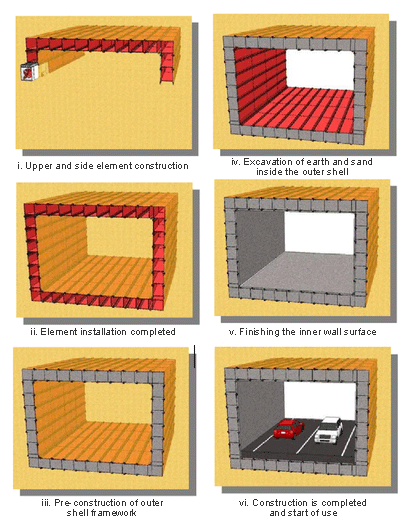Overview
The Joint All Water Shutting (JAWS) method is a technique for constructing an underground structures by sequentially excavating and connecting the split elements of the steel shell with joints to the outer shell structure of the tunnel, then casting concrete inside the steel shell to form the outer shell structural members of the tunnel, and excavating and removing the ground inside. This construction method has less impact on the surrounding ground and can be applied to tunnels of approximately 100m in length. When constructing a large underground space, the cost can be reduced because it is not necessary to manufacture a large excavator. Particularly in construction below the groundwater level, the joint structure with a water-stop function enables rational construction corresponding to groundwater without auxiliary construction methods.Advantages
- The enclosed excavator enables smooth excavation and reduces ground deformation.
- By adopting a joint structure with a watertight function, the need for auxiliary construction methods such as ground improvement is minimized, reducing construction costs and the impact on the surrounding environment.
- The improved strength of the joint enables the use of the main body of the steel shell element.
- The JAWS joints reduce the resistance force of the joint during propulsion, improving its applicability to long-distance construction.
- The quality of joint construction can be improved by cleaning the inside of the joint and improving the workability of mortar filling.

Main structure construction step diagram